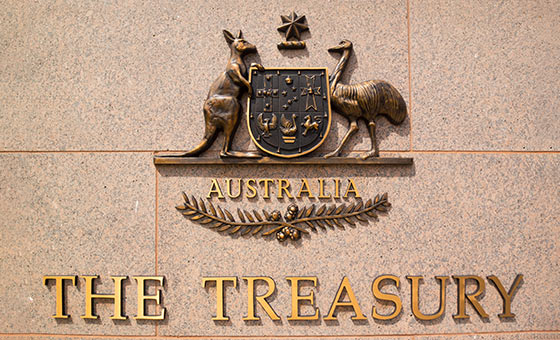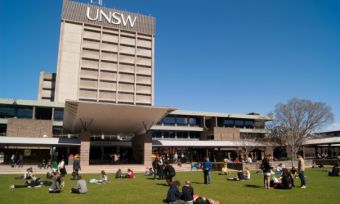Scott Morrison is set to reveal his government’s Budget tonight and while much of it is a mystery, here’s what we know will probably be in it.

Based on what’s been reported up to the time of writing, this year’s Federal Budget will deviate somewhat from previous Coalition Budgets.
It will see increasing funding to schools, along with policies aimed at alleviating the issue of housing affordability, and making healthcare more affordable.
The government wants to balance the Budget by 2021 and is under pressure to reduce the deficit, but also has to contend with widespread concerns about housing and healthcare.
It’s a tough situation to be in, but Treasurer Scott Morrison has assured Australians that tonight’s Budget will be “based on the principles of fairness”.
#BREAKING: Scott Morrison says tonight’s federal budget will be practical and will bring better days ahead for all Australians. #9News pic.twitter.com/dt3XmWY4Mw
— Nine News Australia (@9NewsAUS) May 8, 2017
With that being said, here’s the full rundown of what you might expect to be in the Budget tonight when it’s revealed.
Housing affordability
This is the hot-button issue that’s been plaguing the government for over a year now.
Much has been said about how this Budget will tackle the issue, but here’s what has actually been confirmed or leaked ahead of the Budget:
- The government has firmly ruled out making any changes to negative gearing and is unlikely to reduce the capital gains tax
- Previous suggestions that the government would allow young people to tap into their superannuation in order to form a home loan deposit are unlikely given the backlash to the idea.
- A plan to facilitate tax-free savings for first home buyers is likely to be introduced. This would allow young people to direct pre-tax dollars into a special savings account in order to help them save for a home loan deposit.
Federal Budget: Salary sacrificed first home saver accounts to be announced tomorrow. @Riley7News #7News pic.twitter.com/P3hIO80x9F
— 7 News Queensland (@7NewsQueensland) May 7, 2017
- This Budget could also see reforms to the financial implications of downsizing for retirees and seniors. This could exempt some house sale proceeds from the Age Pension means test, minimising the impact on one’s pension. The government hopes this will remove a significant roadblock to seniors and retirees downsizing their homes, freeing up supply for growing families.
- The government might introduce a tax on unoccupied properties, aimed at investors both domestic and foreign who own properties but intentionally leave them empty for tax purposes.
- Finally, there’s been much talk of introducing a bond aggregator model for housing affordability, aimed at increasing low-cost rental stock by facilitating large-scale borrowing from the private sector for construction purposes.
While some of these proposals and policies have been met with approval from housing affordability bodies, a common criticism of them has been that they do little to address the true issue of housing affordability, and may actually worsen the problem by increasing demand while doing little for supply.
.@D_AccessEcon's Chris Richardson says housing affordability will not be solved in this budget. #auspol MORE https://t.co/Io0mt4UlIy pic.twitter.com/vMvmKbZnZp
— Sky News Australia (@SkyNewsAust) May 8, 2017
That being said, we’ll have to wait until the full Budget is unveiled before we make any calls.
Health
This year’s Budget is almost certain to contain some rather significant health-related changes.
Here’s everything we know about what this Budget could do for health:
- The most significant piece of health-related policy is the revelation that the National Disability Insurance Scheme will be fully funded beyond 2019.
- The Medicare rebate freeze introduced in 2014 is likely to end, meaning that GPs will potentially receive more for bulk-billed consultations. As revealed by News Corp, the rebate for concession patients will rise from July this year, and from July 2018 for general patients.
Budget preview: Medicare surcharge for high income earners and more funding for schools, federal police and athletes. @olivialeeming #7News pic.twitter.com/Kaw6LL0MuP
— 7 News Gold Coast (@7NewsGoldCoast) May 8, 2017
- The government will attempt to push doctors towards automatically prescribing generic versions of medications in order to lower the costs of medicine.
- There’s been talk of creating a lifetime discount incentive for health insurance, reducing the cost of premiums for those who sign up before they turn 31. This is different to the current lifetime health cover (LHC) loading, which increases premiums for those that delay getting health insurance after age 31.
- High-income earners (over $90,000/year for singles and families earning more than $180,000/year) may see an increase to their Medicare Levy Surcharge.
- There’s been talk that the government will opt not to index the Medicare rebate for x-rays and scans, meaning that patients may pay more for these radiology services.
- Similarly, it’s looking like specialist procedures won’t have their Medicare rebates indexed until 2019.
- Australians will uniformly be given a digital My Health Record unless they nominate not to.
- Two of the more expensive medications on the Pharmaceutical Benefits Scheme (PBS) will see their costs reduced by 25%.
- New taxpayer funding for chemists in order to offset the expenses they incur due to low prescription volumes, including $600 million for diabetes checks conducted on-site at pharmacies.
A majority of these policies have been met with moderate approval, but it’s unclear if they’ll pass through Parliament.
Welfare
A Coalition Budget wouldn’t be the same without some crackdowns on welfare. Here’s what could be included in this year’s Budget:
- Plans to target welfare recipients who are able to work but choose not to.
- According to News Corp, this will involve a ‘demerit system’, in which welfare recipients will incur demerit points for failing to turn up to job interviews or ‘work for the dole’ appointments. Those on welfare will start losing payments at four points, and have their payments cut off for four weeks at seven points. Some offences will see welfare recipients incur seven points in one go.
Welfare recipients could be subjected to a demerit-point system under the Government’s proposed budget changes. @olivialeeming #7News pic.twitter.com/8CtfHSDrOe
— 7 News Queensland (@7NewsQueensland) May 8, 2017
- Centrelink recipients may be unable to spend their welfare payments on certain products, including alcohol, gambling, or cash withdrawals.
- ‘Zombie’ cuts leftover from 2014 could be scrapped, leaving a hole of up to $13 billion in the Budget. This hole may potentially be filled by cuts to higher education and welfare.
- As many as 3.5 million people currently on the Age Pension, disability support pensions, and parenting payments will be given a one-time payment to assist with energy bills due by 30 June 2017. This would be $75 for singles and $125 for couples.
Pensioners are set to receive help paying their winter energy bills in the upcoming budget. #9News pic.twitter.com/zD8IGOZbKH
— Nine News Australia (@9NewsAUS) May 7, 2017
- Anti-vaxxers will be the target of a $5.5 million campaign which will see Family Tax Benefit A payments slashed by $726 a year for each child who does not receive the childhood immunisations required in Australia.
These measures have proved contentious in the past, particularly the idea of restricting what welfare recipients can and can’t spend their money on.
However, the measures concerning non-immunised children and so-called welfare “bludgers” haven’t been met with similarly widespread disapproval, meaning they may very well pass.
Education
Here’s where some of the real shake-ups are found.
The government is still trying to reduce funding to higher education, but has pulled an about-face on school funding with ‘Gonski 2.0’. Here are the details:
- $19 billion for schools under a needs-based model.
- $17.5 billion in funding for this year will climb to $22.1 billion by 2021, and then to $30.6 billion by 2027.
- In another radical change, ‘Gonski 2.0’ will not distinguish between public, private, or Catholic schools, meaning that over 20 of Australia’s wealthiest schools will see an effective decrease in their funding, and 350 will see reduced growth to their funding. More than 9,400 schools will benefit overall.
- ‘Gonski 2.0’ constitutes $22 billion less than what Labor has promised to give schools over the decade to 2027.
.@BillShortenMP says education cuts are the first failure of the @TurnbullMalcolm government's budget. More: https://t.co/k10V6UwYfH pic.twitter.com/h7v9qZL4Mi
— Sky News Australia (@SkyNewsAust) May 8, 2017
- The model will likely be funded by the government’s proposed cuts to university funding, which are as follows:
- A 7.5% tuition fee increase for students, starting with 1.8% in 2018 and the rest being introduced gradually over a 4-year period. This will see the maximum total cost for a 4-year, Commonwealth-supported place climb to $50,000, and the maximum cost for a 6-year subsidised medical degree increase to $75,000.
- The HECS repayment threshold will be reduced to $42,000/year, and high-income earners (defined as those earning over $119,882/year) will pay 10% of their income rather than the current 8%.
- Rather than being indexed to the average weekly wages, income thresholds for repayments will be indexed to the consumer price index (inflation).
- A 2.5% efficiency dividend standard will be set for universities, and not meeting this will affect their funding, as will overall performance.
Considering the fate of this government’s previous attempts to change higher education costs, it will be interesting to see how these proposed measures play out in the Senate.
Infrastructure
Most of the Budget’s infrastructure-related policies are funding for major transport developments, along with funding for development of urban areas.
- At least $1 billion for the inland rail line connecting Brisbane with Melbourne, Adelaide, and Perth; the construction will be done in partnership with a private company, with overall costs being pegged at roughly $10 billion.
Queensland Premier hoping for major infrastructure funding in tomorrow’s Federal Budget. @MaxFutcher https://t.co/cHbQVhg894 #auspol #7News pic.twitter.com/enawFRHrmh
— 7 News Queensland (@7NewsQueensland) May 8, 2017
- $6 billion in funding for a second Sydney airport at Badgerys Creek; this constitutes the entirety of the funding needed, as Sydney Airport opted to not fund the project.
- The Government’s $50 billion infrastructure program from last year will be mostly carried over, in an attempt to fast-track developments that have been branded as ‘good debt’ by the government.
- 17 road and rail projects in WA will receive $1.2 billion previously set aside for the ill-fated Perth Freight Link.
Defence
Mirroring increases in defence spending seen in the USA, this year’s Budget is expected to include increases to defence funding in several key areas, much of which attempts to combat Daesh and domestic terrorism. These measures include:
- Overall defence spending increasing from $32.4 billion for 2016-17 to $58.7 billion for 2025-26.
- An announcement from last year pegged overall defence spending at a minimum of 2% of GDP, signalling a shopping spree for military hardware and the largest expansion to the country’s Navy since WWII.
- This year’s Budget contains no new spending for hardware, as most of the funding required is already covered by previous commitments.
- An additional $321.4 million for the Australian Federal Police. This will fund expansion of the force, to the tune of 300 new personnel made up of negotiators, tactical response officers, bomb squad technicians, and forensic specialists.
Hundreds of millions of dollars in the Budget will be directed to the fight boosting federal police crime fighting capabilities. #auspol pic.twitter.com/1Tm6UBQM1W
— 7 News Adelaide (@7NewsAdelaide) May 8, 2017
- Additional funding will also go towards anti-radicalisation programs.
- $350 million in funding for war veteran suicide prevention.
- Budget increases for ASIO and ASIS to assist in counter-terrorism work.
NEWS: Budget leaks say Govt will divert foreign aid money to the fight on terror. #sun7 pic.twitter.com/MgkV5M86UK
— Sunrise (@sunriseon7) May 7, 2017
Business
Much has been said of the Coalition’s planned cuts to company tax rates. Malcolm Turnbull has insisted that they’re necessary to keep Australia competitive internationally, but critics maintain that the government should be putting people (i.e. welfare, health, and education) before big business.
Here’s a rundown of the Budget’s possible business measures:
- An already-passed cut to tax rates for businesses with turnovers of up to $50 million would be extended to all businesses. This will cost the taxpayer an estimated $5.2 billion over the next four years and roughly $24 billion over the decade to 2027.
- The government wants to abolish a handful of tax deductions for oil and gas companies.
- Gambling ads to be banned before 8:30pm during live sporting events – the ban would also apply to the 5-minute period before and after the start of play.
- Scrapping the $130 million annual licence fee broadcasters pay, instead introducing a $40 million spectrum fee.
- Policies and reforms designed to retrieve as much as $15 billion from the ‘black economy’.
- Reforms to the 457 visa that will involve, among other things, making companies pay to bring in foreign workers under the visa.
- The proceeds from this will pay for a new training fund for Australians, aimed at upskilling Australian workers.
- A reported new levy on major banks, in relation to the institutional loans made between the Big 4 (NAB, CBA, Westpac, and ANZ).
- The extension of the tax break for small businesses allowing them to claim a tax deduction on purchases worth up to $20,000. It was due for expiry on June 30 but the incoming Budget could revive it for at least another year.
- Removal of the 2% deficit levy on high-income earners.
It’s important to remember that, as with any policy or reform, changes are only proposed at this point – they don’t become law until they’re approved by both houses of Parliament, and it’s this fact that has given the Coalition trouble in the past.
The Coalition may control the House of Representatives, but the Senate is full of parties such as the Greens, the Xenophon Party, and One Nation, who have historically not been so eager to play ball with pro-big business tax reform or cuts to social welfare programs and higher education funding.
But nothing’s certain in Australian politics, so only time will tell whether these measures pass or fail.
The 2017 Federal Budget will be handed down at 7:30pm AEST on Tuesday 9 May 2017.
Its reading will be broadcast on the ABC from 7:30pm onwards, and livestreamed by the ABC here.
Watch this space for Canstar’s report summarising the 2017 Federal Budget as it is released.





Share this article